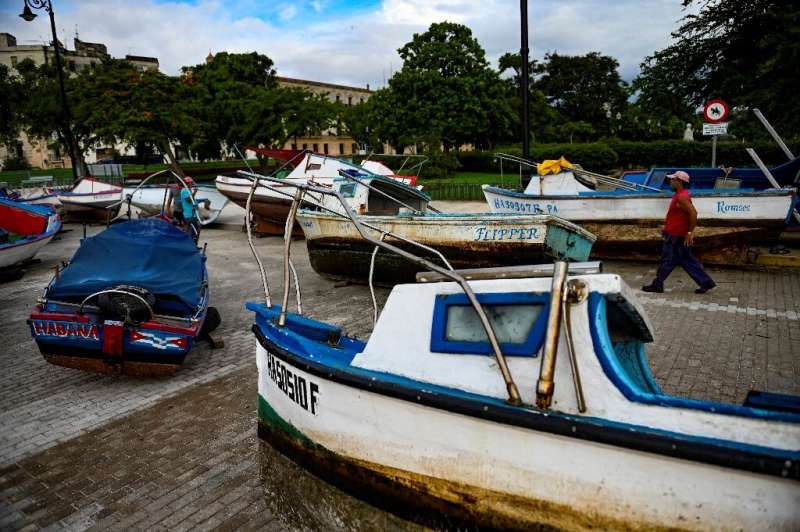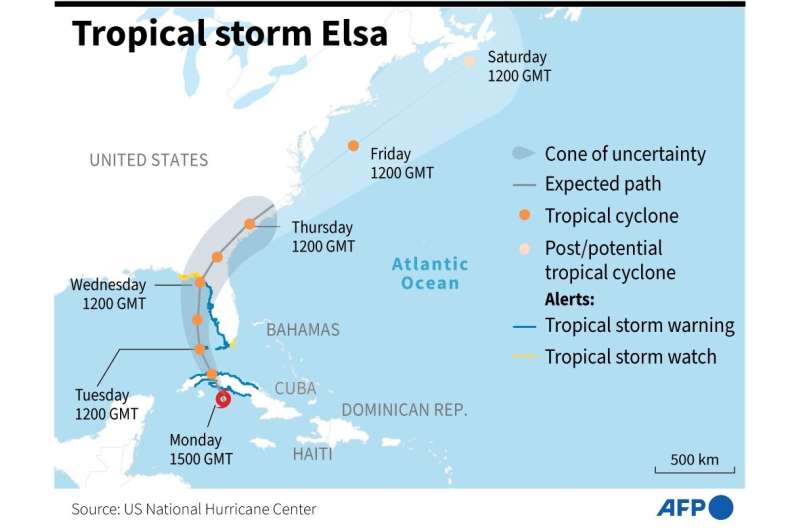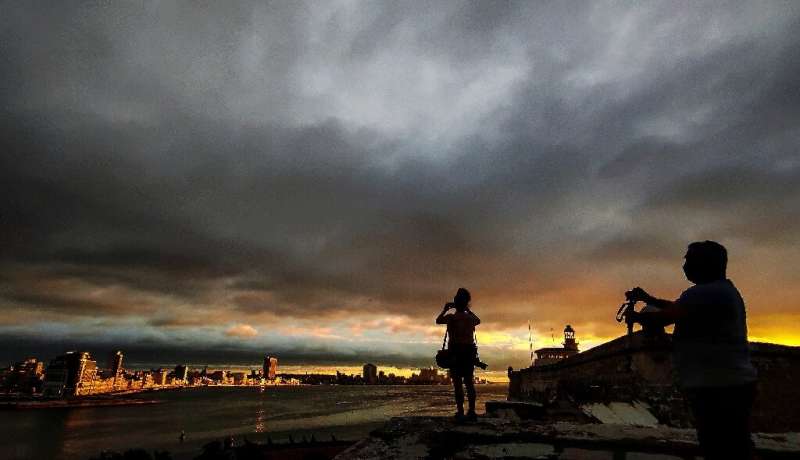Cuban fishermen dragged their boats to safety as tropical storm Elsa approached.
Tropical storm Elsa was moving over the Florida Straits toward the southern US state Tuesday after battering Cuba with drenching rain and strong winds, but left the Caribbean island without major damage.
The US National Hurricane Center reported the storm was now making its way towards the west coast of Florida at 12 miles (19 kilometers) per hour with "conditions beginning to deteriorate across" the Florida Keys, the archipelago at the state's southern tip.
A hurricane watch has been issued "for portions of the west coast of Florida," the NHC said in its latest advisory at 5 am (0900 GMT).
Elsa has left a trail of destruction through the Caribbean, claiming at least three lives, and is expected to gain strength after emerging off the coast of western Cuba Monday evening.
"Slow strengthening is forecast through tonight, and Elsa could be near hurricane strength before it makes landfall in Florida," the NHC said.
Over 100,000 people were evacuated from coastal or low-lying areas as the storm cut through Cuba, with the nation's meteorological institute Insmet reporting winds of up to 100 kilometers per hour.
But its forecasted westward path meant Florida appeared set to avoid the worst of the storm, with the southwest coast of the state set to experience a glancing blow rather than the direct hit expected earlier.
Location and predicted path of the tropical storm Elsa.
In Surfside, on Florida's east coast, workers overnight used explosives in the controlled demolition of the still-standing portion of a collapsed condo building—a job accelerated for fear Elsa might topple the structure.
But on Monday, Miami-Dade County Mayor Daniella Levine Cava told CNN that officials were "very hopeful" that, with Elsa's current path, they would not have to pause search-and-rescue efforts after all.
States of alarm
Elsa is expected to approach the Florida Keys sometime Tuesday on its journey northward.
The NHC had said Elsa packed maximum sustained winds of 50 miles per hour as it churned across Cuba near Havana.
States of alarm were sounded in the provinces of Havana, Mayabeque and Artemisa as thousands were evacuated from their homes—efforts complicated by Covid-19 pandemic as Cuba endured its worst chapter yet of the pandemic.
"Protecting ourselves against Elsa cannot mean letting our guard down against Covid," Prime Minister Manuel Marrero said.
Photographers took pictures of the sunset before the passage of Tropical Storm Elsa in Havana.
Shops closed in Havana and driving was restricted to civil defense vehicles.
The storm conditions would continue over Cuba, with flooding still a possibility, the NHC said.
"This will result in significant flash flooding and mudslides," it said, with Insmet warning that effects from the storm could continue in the coming days.
Elsa claimed two lives in the Dominican Republic and a third in the island state of Santa Lucia during its earlier approach through the Caribbean, the Caribbean Disaster Emergency Management Agency (CDEMA) said.
Cuban President Miguel Diaz-Canel said late Sunday on Twitter that there had only been damage to farm crops.
Elsa became the first hurricane of the Atlantic season on Friday before weakening to tropical storm status on Saturday.
Its advent represented the earliest date ever that a fifth named storm—which does not typically arrive before August—has struck the region.
© 2021 AFP


























